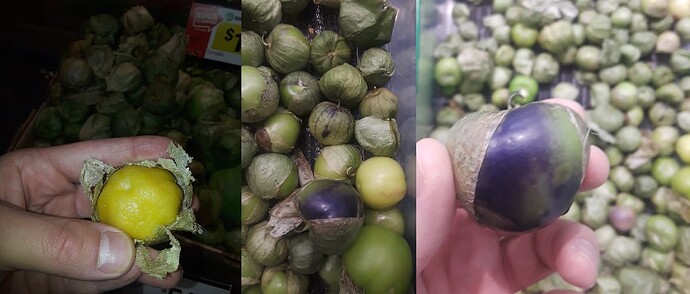I’ll go back to your post and make a proper wishlist in a separate post. To address your questions:
Nope. Gete Okosomin was a (I think) free seed packet from a Canadian company a couple years ago. Revolutionized my opinions of squash, which I was pretty ambivalent about before. But it looks like a deep orange banana squash and smells/tastes like (really good) squash.
Wild Mountain Seed I got their “culinary landrace” - their recent pictures show a range of mostly pumpkin-shapes in fun colours including patterns like my canteloupe squash, plus they describe some tropical flavours in their squash in some of their stuff so thats just my best guess.
I haven’t tasted the Lodi squash yet. Soon ![]()
Definitely animal munched down a whole cattle panel row of cukes. Not sure if bird or rodent, but all the plants were bit right above the ground.
Melons I am less sure. I was away for some weeks with travel and health issues. Came back to find squash had run rampant all through the everything beds and most of the melon plants gone altogether, the last few just being outcompeted by bully squash. No major signs of curcubit disease, so Im guessing whatever critter feasted on my cucumbers then went for melons next. But it could be a disease or insect pest got those while I was gone
I toss the fennel seeds in with my rice and a few drops of oil, toast up before adding water to cook using absorption method.
The toasting brings up the aromatics, the seeds swell up through cooking. Especially good with seeds picked a bit green before they’re fully dry.
Yeah, like more intense arugula.
Yeah, the domestic varieties “Aunt Molly’s”, “cossack Pineapple” and “Niagara”, plus 3-4 hardy edible physalis wild species, Alkenkengi? Peruvianum, etc. Yellow, orange and red.
Yep, started with 3-4 different varieties. I decided to focus on mostly yellow tomatillos because they’re sweeter than green. Also avoided purples because although they’re sweet if you put them in mostly yellow salsa it goes brown.
As with everything else, I got nerdy about seeking out named varieties a couple years ago but it’s all random year 1 mix now.
This is relevant to my interests.
I keep my hot and sweet peppers isolated from each other by planting them in separate gardens (My own property is tiny, so I have a small garden here and then my main veggie patch is down the street where a generous neighbour gives me free reign of their huge backyard.)
I love hot and sweet, so next year I want to plant some sweet peppers in the hot patch and let them cross in. Also helpful because the microclimate in the home garden is fantastic for peppers and the big veggie garden is…not. So my harvest of hot peppers has been kind of pitiful this year. If I plant the hot peppers AND half the sweet peppers at home then I can get a big harvest of both.
Sure. Here you go. Pretty sure it is in fact a Phaseolus Vulgaris, variety name “Black Nightfall”. Ive grown tepary in the past, leaves also look different on that species
I manually harvest by pulling, but with exactly zero care, in July or so. This stuff, whatever variety it actually is, seems to like leaving some of itself behind for next year. We’re heading into year 3 of I have never planted garlic in this garden myself and get an annual supply of garlic (it sends up greens in the fall as well as spring to let me know the garlic beds are still populated).
Yes, thinnings from the self sown garlic beds, the herb border, the other veggie beds, the lawn, etc all get eaten as delicious green garlic.
Can’t say all with 100% certainty, there are def some wild species present nearby.
But yeah, the lawn definitely sprouts entire garlic plants with full bulbs, scapes etc, all identical to the garlic in the beds.
Yes to all. Not me personally (other than Tilia, I do have a big linden in the front yard) but all those trees are widely prevalent.
I’m in southwestern ontario, Kitchener-Waterloo. Good bit of native diversity but I’ve also collected some Vaccinium from further afield in my own gardens
Because … thats not a thing. Meant to say cranberry. Viburnum edule is super common everywhere, sorry to get your hopes up.
Heh, I’m not actually sure. I’ve rarely seen it wild anywhere nearby, but I have a few spicebush I’ve been growing at home for a few years that I got as tiny seedlings grown from local-ish wild seed. The first one flowered last spring so hopefully this year I’ll get some flowers from more of them and berries with seeds to share.
Yep, very very multicultural.
Canada in general takes a more “patchwork quilt” than “melting pot” sort of approach to cultural integration so even medium sized cities like where I live, I have access to a decent range of international grocery stores.
However, around here they’ll often be fairly small convenience store sized places that carry mostly basic staple goods and spices for the [Syrian, East African, Colombian, Lao/Thai, German, Phillipines etc] community. Great for browsing or for the international dishes in my own common repertoire but the fruit and veggie sections are often small and frequently mostly common stuff - like, the Pakistani grocer just stocks your regular potato, onions, tomatoes, carrots, eggplant, green chilis and limes …maybe some bunches of fresh curry leaves and boxes of okra, bitter melon occasionally. Combing through the spice and staple pulses sections does often yield some fun surprises
If I have a really niche mission or just want to trial some unusual fruit varieties, I go spend a weekend exploring the larger markets in Toronto.







